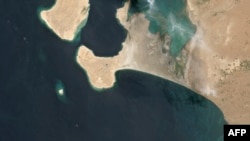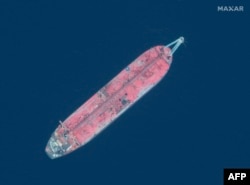The United Nations said Thursday it has purchased a vessel to transfer more than a million barrels of oil from a neglected tanker that threatens Yemen's Red Sea coast, and the salvage operation is planned for early May.
"The purchase of this vessel, this is the most significant step forward in resolving the FSO Safer issue in the last seven to eight years," the U.N. resident and humanitarian coordinator for Yemen, David Gressly, told reporters by video from Aden.
The U.N. has warned for several years that the 47-year-old FSO Safer supertanker is a ticking time bomb that could leak, sink or explode, unleashing a massive ecological and humanitarian catastrophe. The environmental damage and economic fallout would affect countries around the Red Sea region and cost about $20 billion to clean up, in addition to disrupting international shipping through the Bab al-Mandab strait to the Suez Canal.
The Safer has had no maintenance since 2015 when it was largely abandoned because of Yemen's civil war.
The head of the U.N. Development Program told reporters that his agency signed an agreement Thursday with Belgian shipping company Euronav to purchase what is known as a Very Large Crude Carrier, or VLCC. The 332-meter-long double hulled vessel cost $55 million.
"The vessel is currently at dry dock for necessary modifications and regular maintenance before sailing toward the Red Sea to be parked alongside the FSO Safer, which is currently moored about 4.8 nautical miles off Yemen's Ras Isa peninsula," UNDP Administrator Achim Steiner said. "And for then to have the ship-to-ship transfer of the oil take place."
He said the crude carrier is currently undergoing the modifications in China and is expected to sail for Yemen within the next month. There it will be joined by experts from salvage company SMIT, who will board the Safer to carry out the transfer operation, which should take under two months.
"Let me be very clear: this is a risky operation and things could go wrong," Steiner said. "We have done everything we believe we can to minimize these risks, to mitigate them. But at the end of the day, until the oil is taken off, we are operating in an extremely complex operating environment."
Once the oil is successfully transferred, the Safer will be towed, environmentally cleaned, and taken to a green scrap yard for recycling.
The U.N. has been trying to launch this operation for several years, but obstacles by the Houthi rebels, who control the area where the Safer is anchored, were only resolved a year ago. The issue of funding the operation then prevented it moving forward faster.
Originally estimated at $80 million, the U.N. says costs have gone up in the past year, largely due to Russia's invasion of Ukraine. The current operation is expected to cost $129 million, of which $95 million has been secured.
The Safer is carrying 1.1 million barrels of oil — four times the amount the Exxon Valdez was carrying when it ran aground in Alaska in 1989, causing one of the largest environmental disasters in U.S. history.









